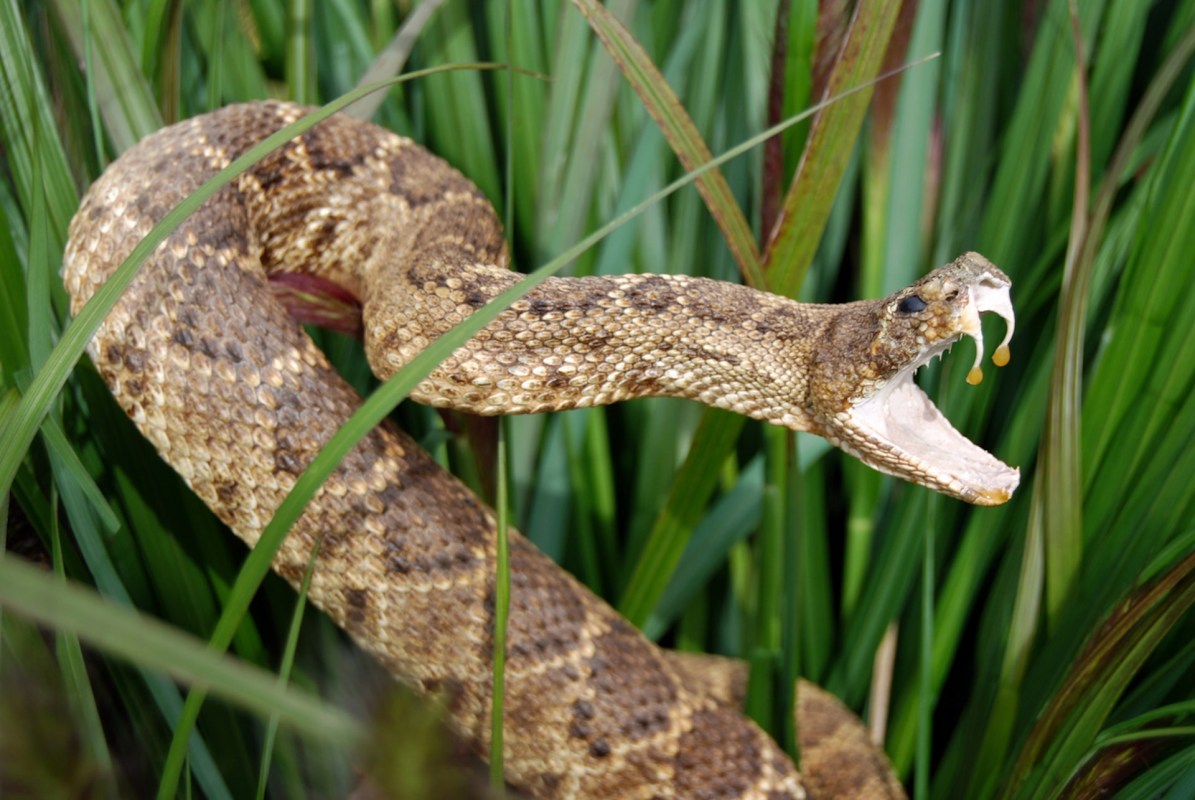It seems there's a significant uptick in snake bites, and researchers have pointed to a surprising cause — our warming world.
What's happening?
A team at Emory University studied how changes in temperature affected the frequency of snake bites in Georgia, according to Yale Climate Connections.
They used data from emergency department visits for snake bites over a seven-year span and found that there was almost a "6% increase in the odds of a hospital visit for a venomous snake bite" for every temperature increase of about two degrees Fahrenheit.
The reasoning?
"Snakes are coldblooded, which means their body temperatures and their behaviors are influenced by the ambient temperature," researcher Noah Scovronick said, per Yale Climate Connections. "So the outdoor temperature influences how active they are."
Why are the increased snake bites concerning?
According to the Centers for Disease Control and Prevention, 7,000-8,000 people are bitten by venomous snakes each year in the United States.
Snake bite victims can die if they do not seek medical treatment, though deaths are rare. Symptoms vary depending on the type of snake, but nausea, vomiting, diarrhea, rapid heart rate, weak pulse, disturbed vision, labored breathing, and muscle twitching are among the possibilities listed by the CDC.
Plus, this is one of many reported changes in animal behavior that could be the result of a warming world.
For example, nine-banded armadillos are migrating northward and are expected to continue their habitat shift as northern states become warmer and, thus, more hospitable to them. In the Canadian Arctic region, grizzly bears are moving farther north, likely due to the overheating of our planet and changing weather patterns.
All of this moving around could increase the frequency of human/wildlife interactions along with their unfortunate consequences, like increased animal bites and greater potential for the spread of disease.
In fact, the CBC reported that "some scientists expect the rate of emergence of new diseases to triple over the next several decades due to increased interaction between humans and animals."
Rising temperatures may even be affecting wild animals' anatomy. For instance, scientists studied more than 100 bird species in the Amazon and Chicago and found wingspans are increasing and body sizes are decreasing. One explanation is that this is an adaptation to warmer weather because smaller bodies with longer limbs release heat more easily.
What can I do to avoid snake bites?
Most snake bites happen between April and October. The most important thing you can do to stay safe is to be aware, according to the journal American Family Physician.
The journal says to avoid tall grass, fallen logs, swamps, rocky areas, marshes, and deep holes. You should also watch where you step and sit and "poke at the ground in front of you with a long stick" if you have to traverse through tall grass or weeds.
That said, in order to curb climate-caused changes in animal behavior, it's important to look toward solutions for a warming world. One way you can do your part is by taking advantage of the Inflation Reduction Act, which will give you up to $8,000 to invest in planet-friendly technology like an electric vehicle, heat pumps, an induction stove, and more.
Join our free newsletter for weekly updates on the coolest innovations improving our lives and saving our planet.









